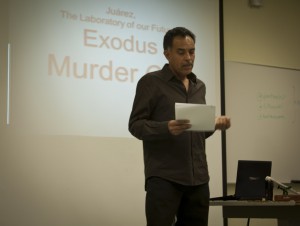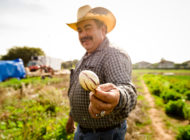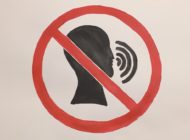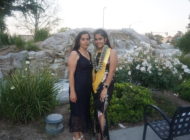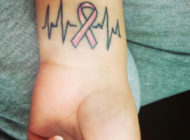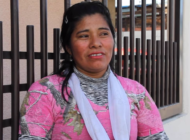“I noticed there were a lot of external maquiladoras coming into town and how the drug market began to grow and lead to a lot of violence in the city.”
By VIRGINIA ISAAD
EL NUEVO SOL
Mexican photojournalist Julian Cardona presented his photographs illustrating the violence in Mexico and the economic turmoil its citizens face during his visit to California State University, Northridge on Tuesday, April 11.
Sharing photographs from his books including Exodus/Exodo and Juarez: The Laboratory of our Future, Cardona noted the ramifications of North American Free Trade Act (NAFTA), an agreement among the US, Mexico and Canada, and the risks migrants face when crossing the border.
“First thing I realized was that in the city there were external forces and transnational forces that were playing a role in the everyday life,” said Cardona.
As a photographer for El Diario de Juarez, he witnessed first hand the effects of foreign markets in Mexico, noting the privatization of the public enterprise and market de-regularization.
“I noticed there were a lot of external maquiladoras coming into town and how the drug market began to grow and lead to a lot of violence in the city,” said Cardona.
Job opportunities lured between 50,000 to 70,000 citizens though pay was only $5-7 a shift, according to Cardona. Photographs showed families living in makeshift homes constructed of cardboard and 13-year-old girls working in factories. The growth of the population coupled with meager wages led to the growth of the drug market in the mid 90’s.
“I noticed the victims [of drug violence] were poor and many were maquiladoras,” said Cardona.
Campesinos, land-owners, protested NAFTA and reforms that led to the loss of their land; forced out of their homes, more than 1.8 million migrants were arrested on the border in 2000, according to Cardona.
Cardona showed black and white images of women crossing the border stating, “200,000 of those crossing the border in 150 degree weather were women.”
He also displayed an image of a man who lost all five fingers in a hamburger factory and another of the casket of an undocumented worker that illustrated the dangers factory workers face, and due to their status they do not receive monetary compensation for injuries.
Meanwhile, the violence in Juarez steadily grew so that between 2008 and 2012, more than 10,000 were executed in the city, leading Cardona to recognize it as the “the city with the highest murder rate in the world.”
His photographs of distraught families grieving the deaths of loved ones present a raw portrayal of the effects of the violence yet the staggering number of dead and displaced people show the gravity of the situation.
“ A quarter million people have been displaced,” said Cardona. “117,000 houses have been abandoned in the city and 32,000 are vandalized or burned if you don’t pay the extortion fees,”
U.S. ties to Mexico through NAFTA and the Merida Initiative continue despite protests from Mexicans and evidence of the economic downturn caused by the maquiladoras. Regardless of the various factors affecting the violence, Cardona is quick to point out the shortcomings of mainstream media’s coverage of the supposed “drug war.”
“Media oversimplifies what happens in Juarez, Mexico,” said Cardona. “The war between cartels is the explanation.”
Currently working as the Ciudad Juarez correspondent for Reuters, he admits the stories he’s witnessed have been hard yet denies that the job of the journalists is any more riskier than that of any other in Juarez.
“By definition, journalism is a risky job,” said Cardona. “Anybody can be a victim-baker, mechanic, doctor; The line has been crossed and I don’t think journalism has an extra risk.”
The ability to provide a platform for the atrocities occurring in Mexico is not lost on those individuals Cardona photographs yet he explains how he does not provide any false hope that his work could ignite any significant change. He also recounts encountering many who are weary and skeptical of his motives, presuming he is working for the government and thus against them.
“I tell them I’m not coming to say you’re bad, I’m coming to document this and I agree with you, government is not the best thing,” said Cardona. “ Maybe it’s corrupt.”
Links:
CSUN Institute for Arts and Media
CUE Art Foundation
Tags: charles bowden Ciudad Juárez drug war economic violence immigration Juarez Julián Cardona Mexico photojournalism violence








